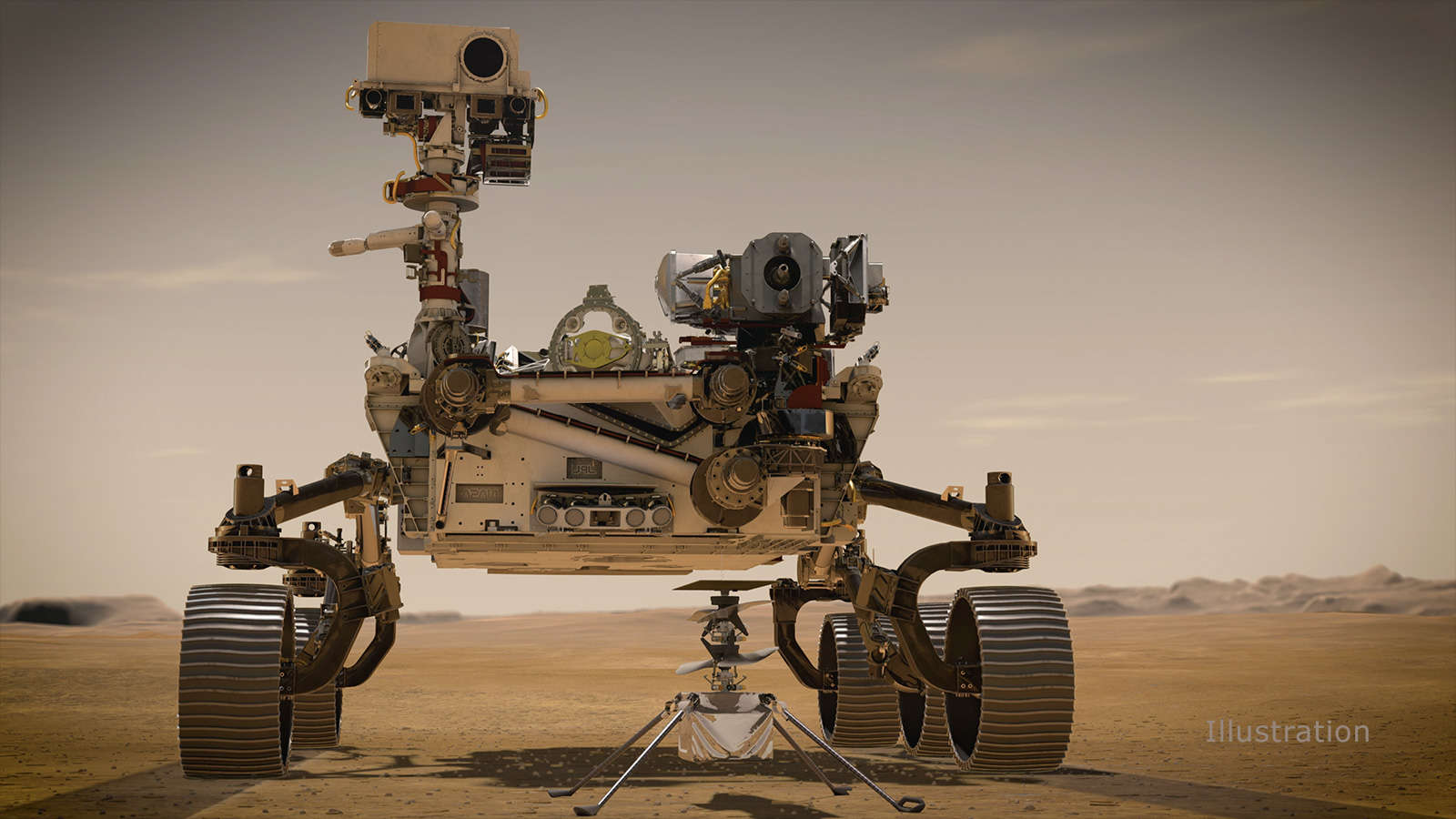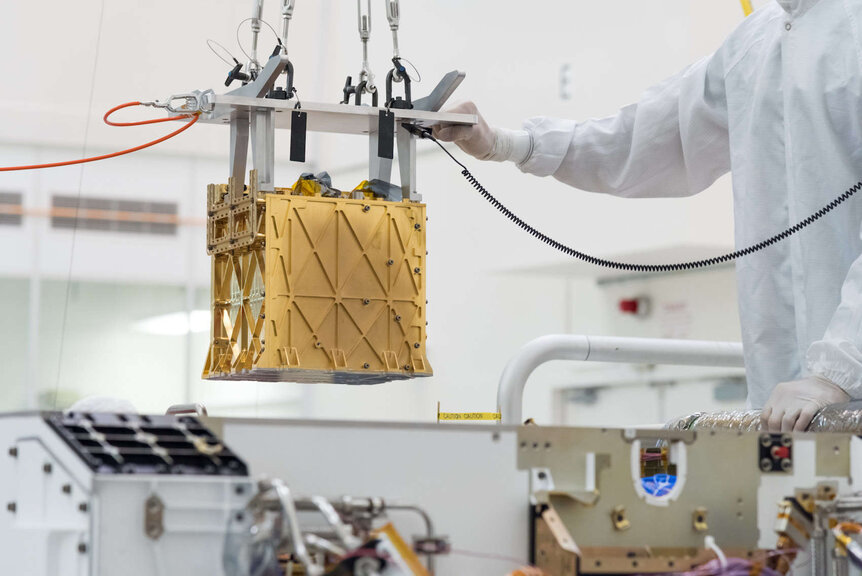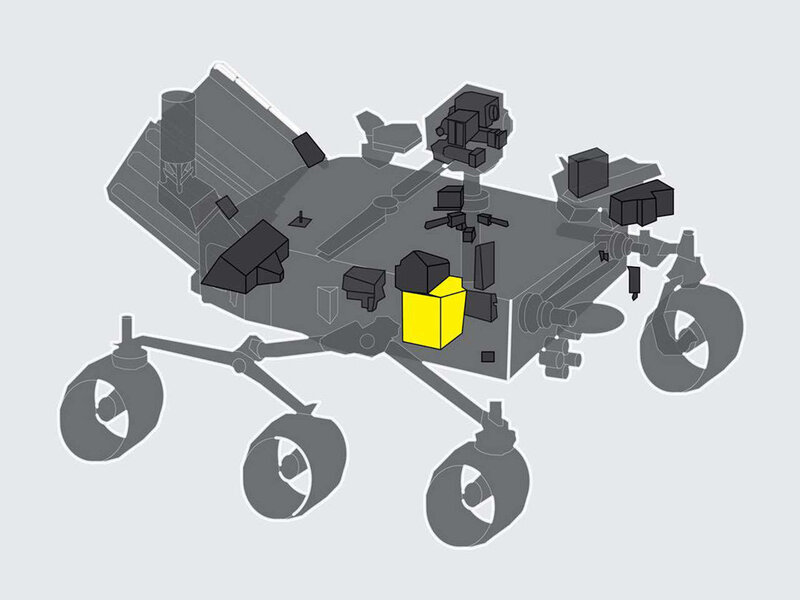Create a free profile to get unlimited access to exclusive videos, sweepstakes, and more!
In a technological first, NASA has made a sip of breathable air on Mars

Well, isn't this a breath of fresh air: An experiment on board the Mars Perseverance rover designed to produce breathable oxygen from carbon dioxide has been switched on and is working! On April 20 it produced 5 grams of oxygen — not a huge amount, but it's designed to make as much as 10 grams per hour, and this is the very first time oxygen has been converted from native air on another planet.
The device is called MOXIE — the Mars Oxygen In-Situ Resource Utilization Experiment — and it's small (like everything sent to Mars, size and mass are at a premium). It's about 24 x 24 x 31 centimeters in size (about the size of a toaster oven or an internal combustion car battery), and has a mass of 17 kilograms, meaning it weighs just 14 pounds on the surface of Mars.
The atmosphere of Mars is more than 95% carbon dioxide (the rest is argon and trace gases), and each molecule of carbon dioxide has two atoms of oxygen. MOXIE works by drawing in CO2 from the air and using electricity to crack the molecules, creating carbon monoxide (CO) and oxygen molecules (O2) — for chemistry aficionados, a cathode splits the CO2 and an anode collects O2. It has an onboard sensor that can check the purity of the O2 created, and then vents it back out into the atmosphere.
It takes a bit of power and heat to do this; MOXIE consumes 300 Watts, and generates temperatures up to 800° C! It's very carefully designed to vent that heat in a way that doesn't damage anything else on the rover, and is also insulated so waste heat doesn't cause any issues either.
MOXIE is a testbed, designed to see if this sort of thing is even possible on Mars. The fact that it worked at all is very cool, and I'll be interested in seeing how it performs when cranked up to full capacity.
The reason for all this is somewhat obvious; humans need oxygen to live. We consume about 850 grams of O2 a day as we breathe, or roughly 300 kilos (nearly 700 pounds) per year. MOXIE by itself can't produce that much, but again it's not designed to actually do that, it's just to make sure the tech works. Still, just four MOXIEs could keep a human breathing on Mars. That first amount it made, 5 grams, is enough for about 10 minutes worth of breathing for a single person.
But O2 is far more useful that just keeping bags of animated meat walking around. It's also a necessary component of rocket propellant. In that case, a lot more is needed: It takes roughly 6 tons of O2 per astronaut for a rocket to get off Mars and into space (assuming the type of propellant NASA is looking at for future mission). Taking that much oxygen to Mars is difficult, so being able to make it in situ is critical to human exploration. Even if some future superMOXIE weighs several tons, it would be better in the long run to send that to Mars to make air.
MOXIE will be used many more times over the next Martian year (which is two Earth years long) and under different conditions to make sure it works well at different times of day and year. Mars has seasons, and temperatures swing quite a bit over the course of a day and year, depending on location, so it's important to see how MOXIE behaves under these circumstances.
In case you're wondering, using something like MOXIE to terraform Mars — make it more Earth-like, with a breathable atmosphere — won't work, at least not by itself. For one thing, say you could convert 1000 tons of CO2 into O2 a day: It would still take 70 million years to convert the entire atmosphere. And even then it's nowhere near enough; the oxygen in Earth's atmosphere by mass is 40 times the mass of the entire Mars atmosphere. So it would still be only a fraction of the oxygen needed*.
And you'd still need nitrogen or some other inert gas to make up most of the rest of the air there. As I've pointed out before, there's not enough frozen CO2 at the poles to make a dent in these numbers. If we want to make Mars habitable, it'll take a heckuva lot more effort.
But, the good news is that if and when we put humans on Mars we don't need them to be able to walk around in fresh air. They can live in habitats, either above or below ground, which will take a lot less O2 to work. MOXIE is the first step toward that, and so far it appears to be a good one.
*You'd need less overall because Mars is smaller, but that's a tiny correction compared to a massive shortfall.
















